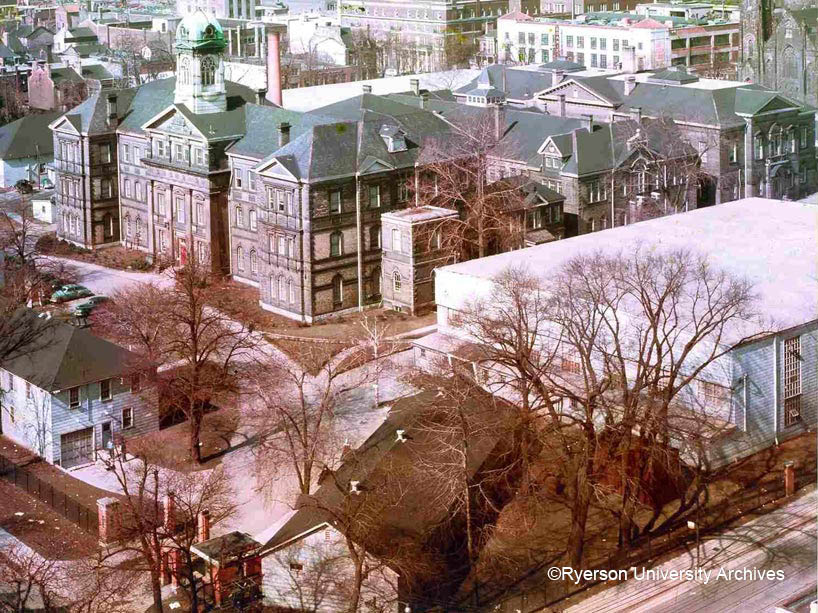Things you didn’t know about Ryerson
A look back at little-known facts about the people, courses and economy of the university’s early days
May 04, 2018

Photo: Early colour photograph of Ryerson campus, taken by 1951 photo arts students John Sebert and John Chadwick. Photo credit: Ryerson University Archives.
In the 70 years since Ryerson established itself as an educational institution, it’s come a long way in preparing students for the modern world.
Here’s a look at some little-known facts (or maybe you do know them!) about the people, places and at one point, animals from Ryerson’s early days.
- Howard Hillen Kerr was Ryerson’s first principal from 1948 to 1966. He involved himself in every aspect of the university, even insisting on signing every work order for building repairs. He introduced a dress code, particularly for male students to follow (shirt, tie and jacket) to boost the school’s image and until the student population went over 1,000, he knew every student by name.
- Some of the courses offered in 1948 were: Jewelry and Horology (Goldsmithing and Gem Setting, Watch-making and repairing); Furniture Crafts (Cabinet Making and Design, Upholstering, Wood Finishing); Machine Tool Technology (General Mechanical, Tool Design, Tool and Die Making, Mechanical Draughting, Advanced Machine Shop); Welding; Stationary Engineering; Cosmetology (Hairdressing, Advanced Hair Styling); and Barbering.
- Tuition cost $25 per year; Non-residents who were British subjects paid $200 and if they weren’t British subjects, it was $300. There was a $10 registration fee, $15 lab and shop deposit, and $5 student council fee.
- It’s up for debate, but the students’ council and Kerr chose the Ryerson colours of blue and gold because they were different from other universities.
- Ryerson had a football team from 1949-1964 and in 1958 they won the Intermediate Intercollegiate Ontario-Quebec Conference championship. Former Toronto Argonauts player and two-time Grey Cup champion Ted Toogood was the coach and Ryerson’s first athletic director from 1949-1961.
- Aurelie and Raymond Wycik ran a tuck shop in Oakham House for 25 years. They were affectionately called the Mama and Papa of Ryerson, even feeding students who were short on change from time to time. Aurelie also helped fellow Estonian refugees secure custodial jobs on campus. She passed away in 1978; Raymond in 1989. Their name is one half of Neill-Wycik, the off-campus student housing co-op on Gerrard Street.
- In 1948, instructors were paid $4 per hour, Principal Kerr received $800 annually for supervising and directors got $500. Starting in 1953, guest lecturers were paid $20 a night.
- Eggy the Ram was a real Ram at one point – a few in fact. The first mascot was purchased in 1960 for $12.50. Eggy II was $35 and befriended the Wycik’s German shepherd Lucky. They could be seen hanging out behind Oakham House.
- Even back then, student housing was a challenge. Houses were purchased on Church Street to serve as temporary housing. By 1963, there were 10 students at 323 Church St. and 12 at 333 Church, paying about $8 per week. Oakham House lodging cost $9 or $10. By 1965, the numbers in these residences had grown to 108.
Facts listed above were collected from the book Ryerson University: A Unicorn Among Horses, by John Downing, applied arts ’72. For more info about Ryerson’s history, please visit the Ryerson Archives & Special Collections website.